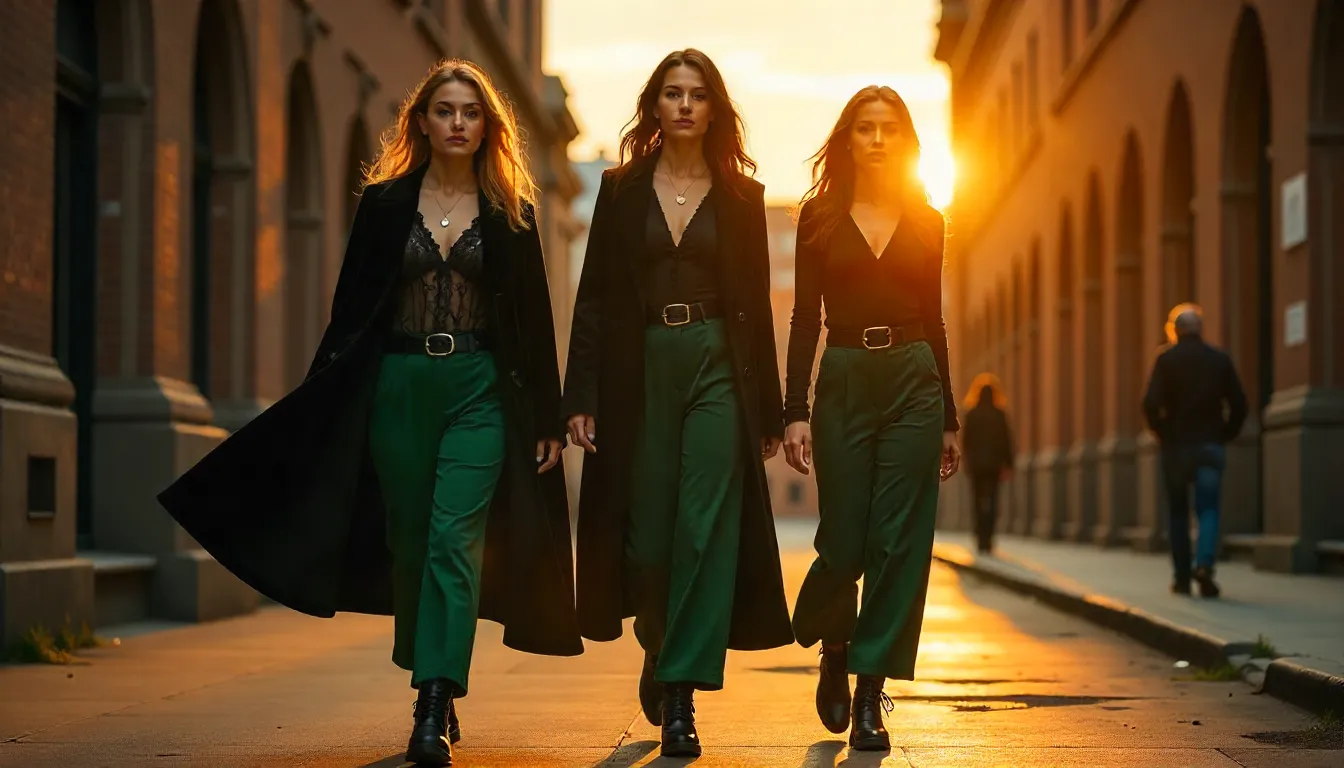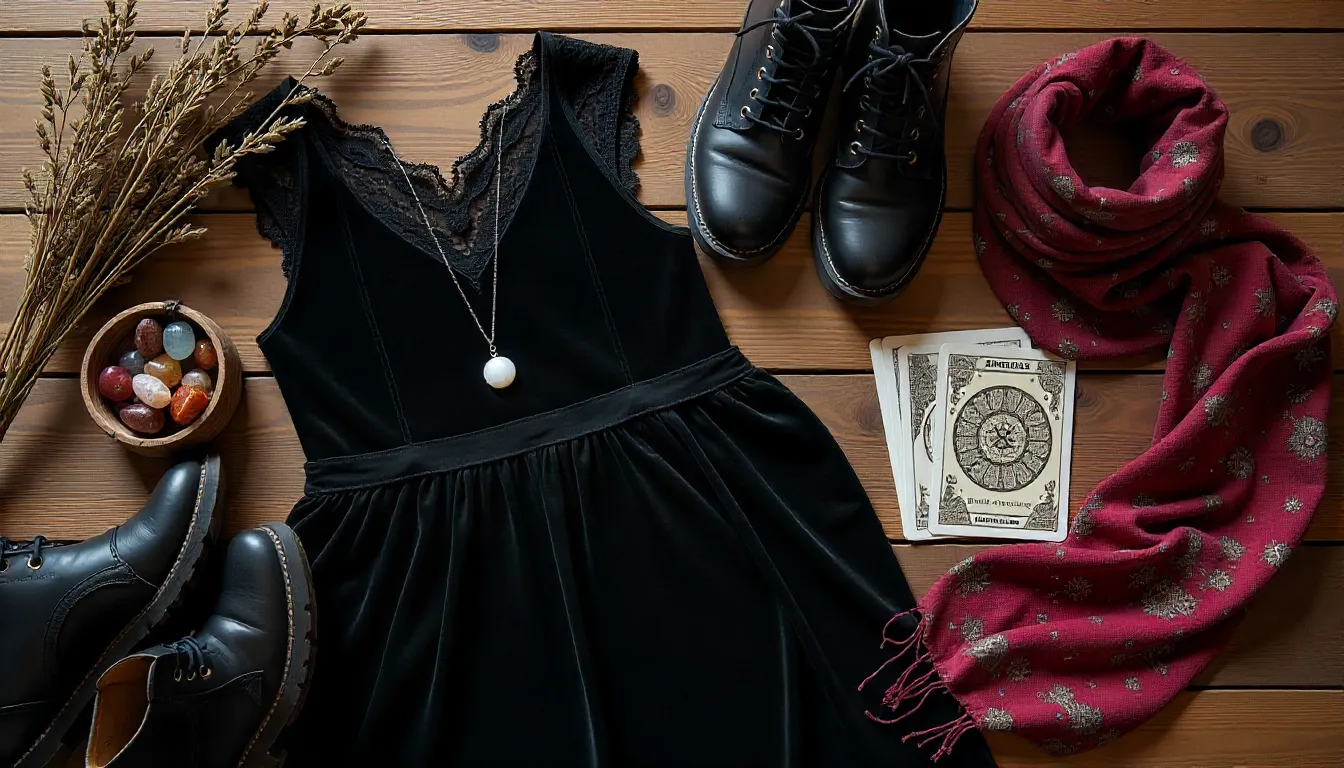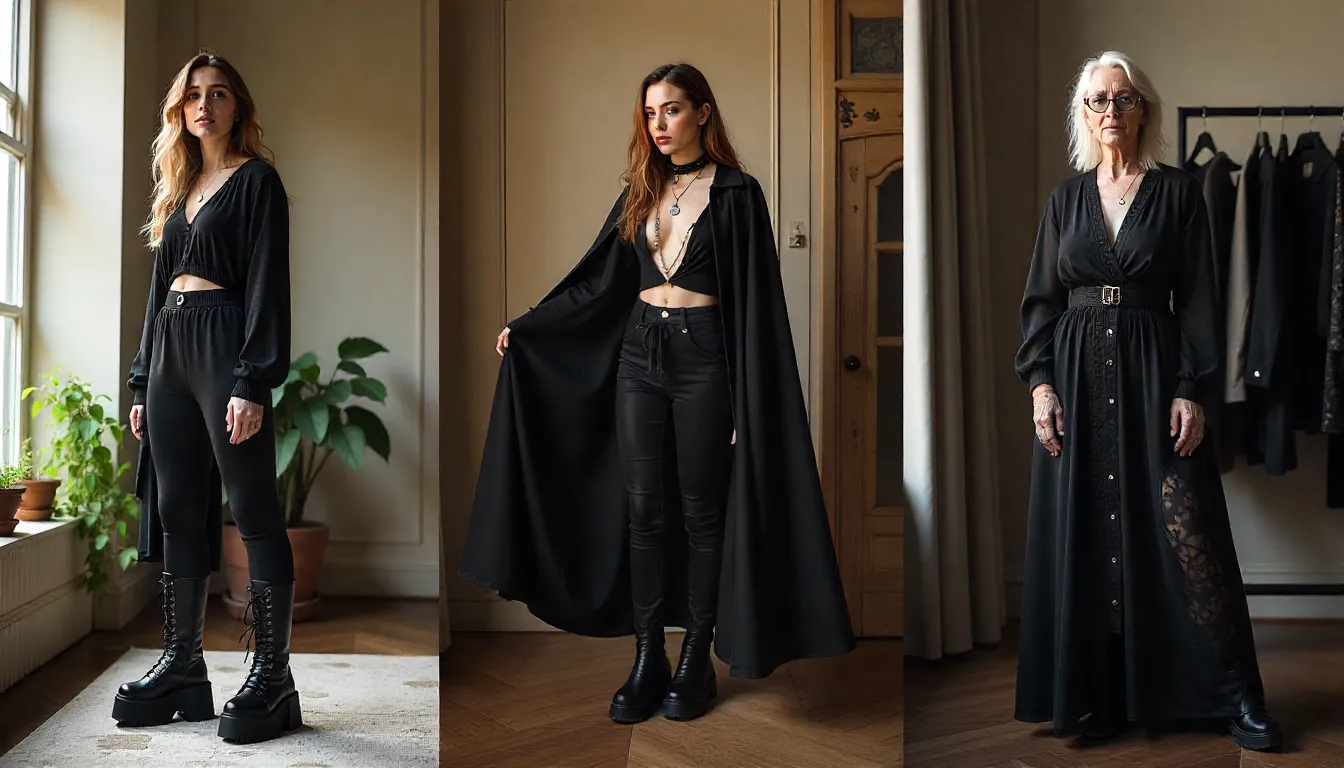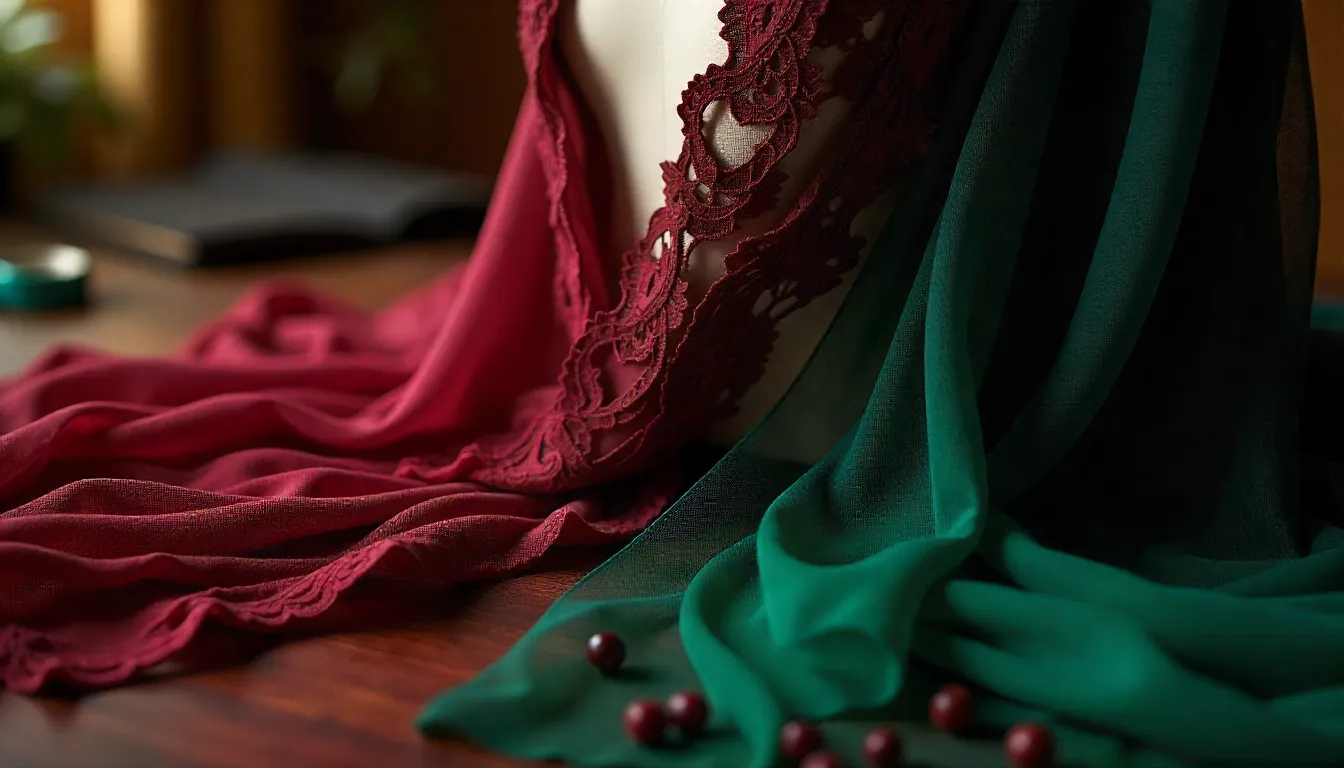Witchy Clothing: What Fashion Buyers Need to Know About the Rising Witchy Aesthetic
The fashion landscape is experiencing a mystical transformation as the witchy aesthetic emerges as one of 2025’s most compelling trends. Fashion buyers who understand this supernatural shift in consumer preferences are positioning themselves at the forefront of a movement that’s reshaping retail strategies across multiple market segments. From high-end boutiques to mainstream retailers, the demand for witchy clothing has transcended seasonal Halloween purchases to become a year-round phenomenon.
This comprehensive guide reveals the critical insights fashion buyers need to capitalize on the witchy aesthetic trend, providing actionable strategies for sourcing, merchandising, and marketing these enchanting pieces that consumers are actively seeking.
Understanding the Witchy Aesthetic Market Phenomenon
The witchy aesthetic represents more than just gothic fashion—it’s a complex cultural movement that blends mysticism, self-expression, and contemporary style. Brands and retailers should action the trend by prioritising styles that align with the growing interest in #Witchy aesthetics, according to fashion forecasting experts.
This trend encompasses several key elements that savvy fashion buyers must recognize:

Core Aesthetic Components:
- Dark, earthy color palettes featuring deep purples, forest greens, and rich burgundies
- Natural textures and flowing silhouettes that evoke mystical energy
- Celestial and occult-inspired symbolism integrated into designs
- Layering techniques that create depth and visual interest
The movement draws inspiration from various subcultures, including goth, bohemian, and cottagecore aesthetics, creating what industry experts call “whimsigoth”—a playful interpretation of traditional witch imagery that appeals to mainstream consumers.
Key Fabric Trends and Material Sourcing
Understanding fabric preferences is crucial for buyers entering the witchy clothing market. Fabrics such as velvet, chiffon, and organza are making a comeback, providing the luxurious feel that witches crave while exuding an ethereal vibe. These materials create the flowing, mysterious silhouettes that define the aesthetic.
Essential Fabric Categories:
Luxury Textures:
- Velvet: The cornerstone of witchy fashion, providing rich texture and deep color saturation
- Lace: Delicate patterns that add feminine mystique without compromising the dark aesthetic
- Chiffon: Creates ethereal movement in dresses, capes, and layering pieces
Natural Materials: Soft, natural materials like cotton, wool, and linen are perfect for that earthy, grounded feel. These fabrics appeal to consumers seeking authenticity and sustainability in their mystical wardrobes.
Specialty Textiles:
- Organza: Adds structure while maintaining translucency
- Brocade: Provides ornate patterns that complement occult-inspired designs
- Corduroy: Offers texture variety for more casual witchy pieces
Smart buyers are sourcing these materials from suppliers who can guarantee consistent quality and color matching, as the witchy aesthetic demands rich, saturated hues that maintain their intensity over time.
Design Elements That Drive Sales
The witchy clothing market thrives on specific design elements that resonate with consumers seeking authentic mystical fashion. Our one-of-a-kind art features crescent moons, death moths, pentacles, alchemy symbols, bats, and forest findings, demonstrates how symbolic elements drive consumer engagement.
High-Converting Design Features:
Symbolic Elements:
- Celestial motifs (moons, stars, constellations)
- Nature-inspired patterns (branches, leaves, crystals)
- Occult symbols (pentacles, runes, alchemy signs)
- Animal imagery (ravens, cats, moths, owls)
Silhouette Strategies: Layers will play a significant role, with flowing capes, long skirts, and intricate lace being crucial components of a witch-inspired wardrobe. These silhouettes create the dramatic effect consumers associate with witchy fashion.
Color Psychology:
- Deep jewel tones that evoke mystery and sophistication
- Earth tones that connect with nature-based spirituality
- Classic black that serves as the foundation for most witchy wardrobes
- Metallic accents in silver and copper that add mystical sparkle
Fashion buyers should prioritize pieces that can be mixed and matched, as the crux of the witchy aesthetic is a wardrobe full of items you can wear over and over.

Target Demographics and Consumer Behavior
Understanding who purchases witchy clothing is essential for effective buying strategies. The demographic extends far beyond traditional goth consumers, encompassing:
Primary Consumer Segments:
Gen Z Spiritual Seekers (Ages 18-27):
- High social media engagement with witchy content
- Values authenticity and self-expression
- Willing to invest in quality pieces with meaning
- Influenced by TikTok and Instagram fashion content
Millennial Mystics (Ages 28-42):
- Higher disposable income for premium witchy fashion
- Seeks sophisticated interpretations of the aesthetic
- Values sustainable and ethically-made clothing
- Influenced by wellness and spiritual lifestyle trends
Alternative Fashion Enthusiasts (All Ages):
- Loyal customer base with established buying patterns
- Appreciates unique, hard-to-find pieces
- Willing to pay premium prices for authentic designs
- Values craftsmanship and artistic expression
Purchasing Behaviors:
- Seasonal spikes during autumn months with year-round baseline demand
- Strong preference for unique pieces over mass-produced items
- High engagement with brands that demonstrate authentic understanding of witchy culture
- Emphasis on versatile pieces that work in multiple styling contexts
Seasonal Buying Strategies
While witchy fashion maintains year-round appeal, strategic seasonal buying maximizes profitability and inventory turnover.
Autumn Peak Season (September-November):
- Focus on statement pieces like capes, cloaks, and dramatic dresses
- Increase inventory depth in core categories
- Emphasize layering pieces that complement the season
- Market celestial themes aligned with harvest and spiritual traditions
Winter Sustainability (December-February):
- Transition to cozy witchy pieces featuring warm fabrics
- Focus on jewel tones and metallic accents for holiday appeal
- Maintain core black pieces as wardrobe staples
- Emphasize practical mystical fashion for everyday wear
Spring Renewal (March-May):
- Introduce lighter fabrics while maintaining witchy silhouettes
- Focus on earth tones and nature-inspired prints
- Emphasize botanical and crystal motifs
- Target consumers embracing spring spiritual practices
Summer Adaptation (June-August):
- Offer lighter interpretations of witchy style
- Focus on flowing dresses and ethereal fabrics
- Maintain dark color options despite seasonal trends
- Emphasize moon and star motifs for summer solstice appeal
Pricing Strategies and Market Positioning
The witchy clothing market supports multiple price points, allowing buyers to target various consumer segments effectively.
Premium Market ($100-500+):
- Hand-crafted pieces with unique design elements
- High-quality fabrics and construction
- Limited edition or artist collaboration pieces
- Sustainable and ethically-produced options
Mid-Range Market ($50-150):
- Quality basics that form witchy wardrobe foundations
- Versatile pieces suitable for daily wear
- Branded items from established alternative fashion labels
- Seasonal statement pieces with broad appeal
Accessible Market ($15-75):
- Entry-level pieces for new customers
- Fast fashion interpretations of witchy trends
- Accessories that allow easy adoption of the aesthetic
- Young consumer-focused pricing and styling
Merchandising and Visual Presentation
Effective merchandising of witchy clothing requires understanding the atmospheric elements that resonate with target consumers. The aesthetic extends beyond individual pieces to encompass entire lifestyle presentations.

Store Layout Strategies:
Create Mystical Atmospheres:
- Use dramatic lighting to enhance fabric textures and colors
- Incorporate natural elements like crystals, dried flowers, or branches
- Display pieces in layered, flowing arrangements that suggest movement
- Create vignettes that tell stories about the lifestyle the clothing represents
Cross-Merchandising Opportunities:
- Pair clothing with complementary accessories (jewelry, bags, scarves)
- Display books on spirituality, crystals, or herbalism nearby
- Include home decor items that align with the witchy aesthetic
- Feature beauty products with mystical packaging or natural ingredients
Digital Merchandising:
- Use lifestyle photography that captures the mystical mood
- Create outfit collections that demonstrate versatility
- Implement user-generated content showcasing real customers
- Utilize social media platforms where witchy content thrives
Supply Chain and Vendor Relationships
Building successful witchy clothing lines requires developing relationships with suppliers who understand the aesthetic’s unique requirements.

Vendor Selection Criteria:
Quality Assurance:
- Consistent color matching for deep, rich hues
- Attention to detail in construction and finishing
- Understanding of flowing silhouettes and draping techniques
- Experience with specialty fabrics and embellishments
Design Collaboration:
- Ability to interpret mystical themes into wearable fashion
- Flexibility in customization and small-batch production
- Understanding of symbolic elements and their cultural significance
- Capability to produce both mainstream and niche interpretations
Sustainability Considerations:
- Eco-friendly fabric options that align with spiritual values
- Ethical manufacturing practices
- Local sourcing options to reduce environmental impact
- Fair trade partnerships that support artisan communities
Marketing and Brand Positioning
Successfully marketing witchy clothing requires authentic engagement with the spiritual and alternative fashion communities.
Authentic Marketing Approaches:
Community Engagement:
- Partner with spiritual influencers and witchy lifestyle content creators
- Sponsor or participate in metaphysical fairs and alternative fashion events
- Create educational content about the history and meaning behind design elements
- Support causes that align with the values of the witchy community
Content Strategy:
- Share styling tips that respect the cultural significance of the aesthetic
- Create mood boards and inspiration content that goes beyond simple product shots
- Feature diverse models who authentically embody the witchy lifestyle
- Engage with seasonal spiritual traditions and celebrations
Social Media Optimization:
- Utilize platforms where witchy content naturally thrives (TikTok, Instagram, Pinterest)
- Use relevant hashtags that connect with existing communities
- Create shareable content that showcases the versatility of witchy fashion
- Encourage user-generated content through contests and features
Inventory Management Best Practices
The witchy clothing market requires specialized inventory management approaches due to its unique seasonal patterns and consumer behaviors.
Stock Planning Strategies:
Core Wardrobe Pieces:
- Maintain consistent inventory in foundational black pieces
- Stock versatile layering items year-round
- Ensure adequate supplies of best-selling silhouettes
- Plan for quick restocks of viral or trending items
Seasonal Variations:
- Increase autumn inventory by 40-60% to meet peak demand
- Plan for extended selling seasons as witchy fashion maintains appeal beyond Halloween
- Consider pre-orders for limited edition or artist collaboration pieces
- Maintain backup stock for social media-driven demand spikes
Size and Fit Considerations:
- Stock extended size ranges to serve the inclusive witchy community
- Consider the layering nature of the aesthetic in fit planning
- Plan for the flowing, loose silhouettes that define the style
- Ensure adequate representation across all size categories
Frequently Asked Questions
Is the witchy aesthetic just a seasonal trend?
While the witchy aesthetic sees increased interest during autumn months, it has evolved into a year-round fashion movement. The crux of the witchy aesthetic is a wardrobe full of items you can wear over and over, making it a sustainable lifestyle choice rather than a temporary trend.
What price points work best for witchy clothing?
The market supports multiple price tiers, from accessible pieces under $50 to premium artisan-made items over $200. Success depends on matching quality and design authenticity to the target price point.
How important is sustainability in the witchy fashion market?
Sustainability is crucial as the witchy community values connection to nature and ethical practices. Brands emphasizing eco-friendly materials and ethical production see stronger consumer loyalty and premium pricing support.
What are the most important pieces for a witchy clothing line?
Essential pieces include flowing dresses, layering capes or cardigans, wide-leg pants, and statement accessories featuring mystical symbols. These versatile items form the foundation of most witchy wardrobes.
How can mainstream retailers incorporate witchy elements?
Mainstream retailers can introduce witchy elements through color palettes, subtle symbolic prints, flowing silhouettes, and mystical accessories without fully committing to the alternative aesthetic.
Future Outlook and Trend Evolution
The witchy aesthetic shows strong indicators for sustained growth as consumers increasingly seek fashion that supports self-expression and spiritual connection. Early contenders for the biggest trends of 2025 point to a more whimsical, almost idiosyncratic take on dressing, suggesting that unique, personally meaningful fashion will continue gaining importance.
Fashion buyers who establish themselves in this market now are positioning for long-term success as the aesthetic evolves and matures. The trend’s emphasis on versatility, quality, and meaningful design aligns with broader consumer shifts toward sustainable and intentional fashion consumption.
The intersection of spirituality, self-expression, and fashion creates a powerful market opportunity for buyers who approach the witchy aesthetic with respect, authenticity, and genuine understanding of its cultural significance. By focusing on quality, community engagement, and meaningful design, fashion buyers can build successful, sustainable businesses that serve this growing and passionate consumer base.